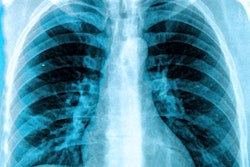
It's estimated that 20% to 50% of imaging scans in the U.S. may be unnecessary, and radiology exams accounted for more than 100 overutilization targets in the Choosing Wisely campaign. With these facts in mind, radiologists and clinicians at Johns Hopkins Hospital are collaborating to develop an ambitious plan to solve the problem.
The initiative is designed to ensure that imaging exams in all departments are warranted and that the most appropriate protocols are selected. The ultimate goal is to improve patient outcomes and safety and lower healthcare costs.
"This is a call to action. It is our responsibility to drive appropriate utilization for many reasons," said Dr. Pamela Johnson, radiology residency program director. "One, because we are the ones who can control it, but also because we can do it in a way that maintains quality and safety."
Overutilization costs
Unnecessary imaging is a concern worldwide. The problem has infiltrated the emergency department and is found in the outpatient setting as well. One study estimated that overused neuroimaging procedures alone cost an estimated $3.9 billion between 2007 and 2010.
 Dr. Pamela Johnson from Johns Hopkins.
Dr. Pamela Johnson from Johns Hopkins.During a presentation at last month's American College of Radiology (ACR) meeting, Johnson cited previous studies showing that radiology exams are among the top four contributors to the healthcare debt of patients.
The U.S. isn't the only country plagued by overutilization. Researchers in Saudi Arabia concluded that radiologists' failure to check the validity of CT and MRI scan requests and ignorance among referring doctors of appropriateness criteria are the most important reasons for costly inappropriate requests of radiological exams.
"Clearly, everyone recognizes that we can improve the appropriateness for the imaging we are doing," said Johnson, who recently was appointed director of appropriate imaging at Johns Hopkins. "Radiologists have the responsibility not to recommend a follow-up scan, if it is not necessary, and they can contribute to the problem if they are making recommendations that are not evidence-based."
Johns Hopkins' initiative to reduce unnecessary imaging began with a request from Dr. Roy Ziegelstein, vice dean of education, that every residency fellowship program director choose one recommendation from the Choosing Wisely campaign and implement it.
The institution's data analytics team also evaluated exams by procedure type, ordering provider, location, and department. The potential benefits of reducing overutilization were assessed and quantified through imaging volume, radiation exposure, and financial data. Hospital charges and costs were used to assess the financial impact so the findings could be relevant for both payors and hospitals.
The radiology faculty at Johns Hopkins also was surveyed to identify the modalities and specialties that were in the greatest need of utilization improvement. A host of targets were mentioned.
For example, neuroradiologists noted a number of culprits for unnecessary imaging, such as combined head and maxillofacial CT scans, contrast- and noncontrast-enhanced MRI scans for headaches, CT and MRI exams on the same patient, and complete CT scans for spine trauma. Musculoskeletal clinicians also reported that multiple x-rays of the lumbar spine for back pain are often unnecessary.
Nuclear medicine clinicians noted utilization issues with PET/CT for paraneoplastic workups for suspected cancer. There were also suggestions to investigate chest x-ray use on admission and for patients in the intensive care unit, body CT and ultrasound scans performed on the same patient, inpatient ultrasound for acute kidney injuries, and CT for acute pancreatitis from body imagers.
"One of the biggest hurdles is identifying what is being done appropriately versus what is not being done appropriately," Johnson told AuntMinnie.com. "We can measure ordering, but we cannot tell if it is appropriate. That is where a clinical decision-support tool is helpful because it collects that information as the order is created -- the reason why the order is being placed -- and reports can be generated that eventually show providers how appropriate their ordering is."
In the end, the strategic plan to reduce unnecessary scans had five components:
- Identify inappropriate use.
- Engage facility leaders from multiple specialties.
- Educate broadly and at the point of care.
- Identify resources to measure appropriateness and generate ordering provider feedback.
- Measure pre- and postintervention utilization, appropriateness, radiation exposure, and costs.
The plan was based on the staff's own observations and internal utilization data, as well as outpatient efficiency metrics from the U.S. Centers for Medicare and Medicaid Services (CMS) and ACR Select for decision-support analytics.
Imaging targets
Take, for example, the issue of ordering brain and sinus CT scans at the same time, as mentioned by neuroradiologists. The CMS metrics informed Johns Hopkins that it appeared to be ordering the exams more frequently than other institutions. The challenge was that they need coverage of the sinus and brain if the patient requires intraoperative navigation. The problem was solved when neuroradiologist Dr. David Yousem and and ear, nose, and throat (ENT) specialists created consensus guidelines.
"Part of the problem in being in a place like Johns Hopkins is that practice patterns may be different because different types of patients are being taken care of," Johnson said. "ENTs and radiology devised a set of rules, everyone agreed on them, we put it in place, and it worked. Ordering went down, and it is more appropriate now."
Johns Hopkins is also using fourth-year residents to serve as ordering consultants. A resident carries an iPhone at all times and is available for questions about the most appropriate imaging approach for a particular problem.
"When [ordering clinicians] don't know what to order, they call one of our senior residents who has already passed the board exam," Johnson said. "A neuroradiologist might not know what to tell someone about a body CT, but the fourth-year resident does. That has been a very effective resource."
In fact, in reviewing 219 consultations from the program, Johns Hopkins found that 54% of the calls solved a question about the best imaging scan to use, while 30% optimized the imaging protocol and 10% eliminated an unnecessary scan.
The road ahead
Johns Hopkins staff also created educational modules to share across the health system. In addition, radiologists are scheduled to teach a half-day continuing medical education course this fall titled "Order Wisely." The course content will be based on a survey that asks nonradiologists to detail the imaging areas in which they consider themselves deficient.
Internal medicine staff, for example, will learn from radiologists about the ACR's appropriateness use criteria as well as best practices for clinicians.
"Doctors always want to perform their best," Johnson said. "You can help them by showing them how they perform against their peers."
Solving the issue of imaging overutilization may be akin to reversing course with an ocean liner.
"You have to realize there is no silver bullet," she said. "We came up with this plan and we are rolling it out, but it takes a very long time. I think anyone who is going to undertake this must realize it is a long process."
Johnson advocates beginning utilization education in medical school and following up at the residency and faculty levels. In addition, clinical decision support and provider feedback are imperative.
"All three of those need to be integrated into your improvement plan because improving imaging appropriateness is a very, very big task," she said. It takes a big team, but that is not a reason not to do it."



















